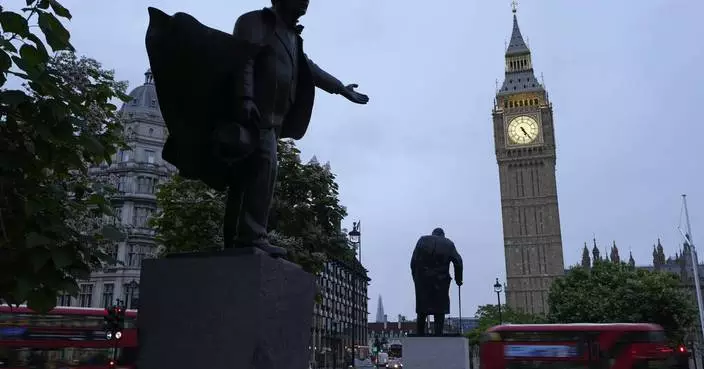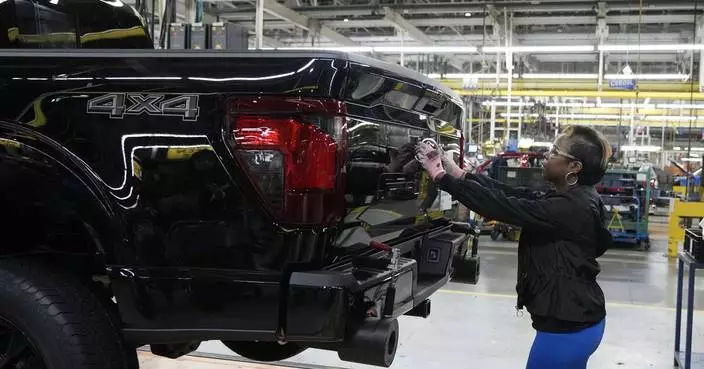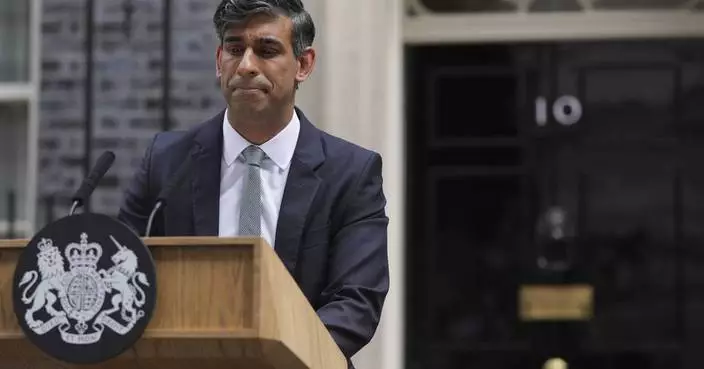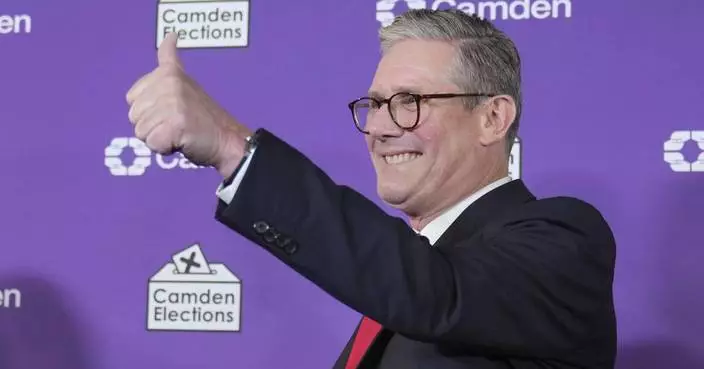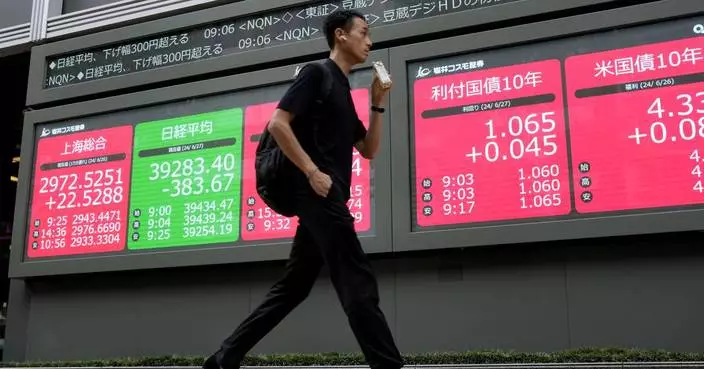WASHINGTON (AP) — The number of Americans filing for unemployment benefits inched up last week and remain historically low, however the total number of people collecting jobless benefits continues to grow.
The Labor Department reported Wednesday that jobless claims for the week ending June 29 rose by 4,000 to 238,000 from 234,000 the previous week. The data was issued one day earlier than its regular Thursday release due to the July Fourth holiday.
The total number of Americans collecting unemployment benefits rose for the ninth straight week, to 1.86 million, for the week of June 22. That’s the most since November of 2021.
Economists say that while the number of new people applying for jobless aid each week remains relatively modest, some who are receiving benefits are finding it harder to land new jobs. That suggests that demand for workers is waning, even as the economy remains strong. That, combined with recent data showing that inflation continues to ease, could point to the so-called “soft-landing” the Federal Reserve was aiming for when it began its rate-hiking campaign.
The Federal Reserve raised its benchmark borrowing rate 11 times beginning in March of 2022 in an attempt to extinguish the four-decade high inflation that shook the economy after it rebounded from the COVID-19 recession of 2020. The Fed’s intention was to cool off a red-hot labor market and slow wage growth, which can fuel inflation.
Many economists had expected the rapid rate hikes would trigger a recession, but so far that hasn’t happened, thanks in large part to strong consumer demand and a sturdier-than-expected labor market.
“The data bear watching for signals about a more material weakening in the labor market going forward, which will have implications for Fed policy,” said Rubeela Farooqi, chief U.S. economist at High Frequency Economics.
The Fed’s next policy meeting comes at the end of this month, but few experts are expecting a rate cut then. However, investors are betting that there is nearly a 70% chance for a reduction at the Fed’s September meeting.
The Fed will release the minutes from its most recent interest rate policy meeting Wednesday afternoon and there may be more hints as to how Fed officials feel about the state of the U.S. economy, and what they may be thinking about current interest rates.
While the labor market remains sturdy, recent government data suggest some softness taking hold.
The four-week average of claims, which evens out some of the week-to-week volatility, also continued to climb, rising by 2,250 to 238,500.
Applications for jobless benefits are trending higher in June after mostly staying below 220,000 this year. The unemployment rate ticked up to 4% in May, despite the fact that America’s employers added a strong 272,000 jobs last month. Job postings in May rose slightly to 8.1 million, however, April’s figure was revised lower to 7.9 million, the first reading below 8 million since February 2021.
The government issues its June jobs report on Friday. Analysts are forecasting that U.S. employers added 190,000 jobs last month, a healthy figure but down from May.
Weekly unemployment claims are widely considered as representative of layoffs.

A hiring sign is displayed at a restaurant in Chicago, Monday, July 1, 2024. On Wednesday, July 3, 2024, the Labor Department reports on the number of people who applied for unemployment benefits last week. (AP Photo/Nam Y. Huh)
LONDON (AP) — The Labour Party has won Britain’s general election, bringing a new party to power for the first time in 14 years. But Labour leader Keir Starmer didn't actually become prime minister until a carefully choreographed ceremony on Friday during which King Charles III formally asked him to form a new government.
It’s a moment that embodies the fact that, technically at least, the right to govern in the United Kingdom is still derived from royal authority, centuries after real political power was transferred to elected members of Parliament.
The process is swift, if somewhat brutal for departing prime ministers, like Rishi Sunak. Here's how ceremonial events unfold after an election.
While Britain is a constitutional monarchy where the king’s power is strictly limited by law and tradition, much of what happens here has echoes of the past. In this case, the process harkens back to a time when the king exercised supreme power and chose his preeminent minister — the prime minister — to run his government.
Today, the prime minister is the leader the party that holds a majority in the House of Commons, but technically he or she must still be offered the post by the monarch, said Anna Whitelock, professor of history of the monarchy at London’s City University.
“It reflects our historic past and it reflects the fact that we do have a constitutional monarchy, a parliamentary democracy, and the prime minister and the monarch therefore work hand in glove,’’ she said. “Both of them have a key role in the Constitution. And we see that enacted, on the day where a prime minister formally takes up his position.”
First, the outgoing prime minister — Sunak, in this case — goes to Buckingham Palace to offer his resignation to the king. Then the incoming one — Starmer — arrives for his first audience with Charles.
“There’s a tiny window where between the exiting prime minister, and officially the appointment of the new one, where technically power resides for those few minutes with the monarch,’’ Whitelock said. “So there’s a brief moment where there’s effectively a kind of vacuum in terms of parliamentary democracy. … But, of course, straight away there is that moment where the new prime minister is appointed.’’
That occurs when the prime minister-to-be sweeps into the palace for a ceremony known as the “Kissing of Hands,’’ though no kissing actually occurs. After the king asks the new prime minister to form a government, he bows and shakes Charles’ hand. A photo is snapped to record the moment power is transferred.
Though there’s no record of what is said between monarch and prime minister, dramatic activity swirls outside the palace gates. News helicopters followed Starmer's and Sunak’s cars to the palace. Commentators breathlessly record their progress and speculate about what’s being said behind closed doors.
Traditionally, the new prime minister then leaves the palace in a prime ministerial car and returns to Downing Street to make a statement, receiving the applause of staff members as he enters the famous black door of No. 10 and begins the business of government.
In Britain, the verdict of the voters is delivered swiftly.
After suffering a brutal defeat at the polls, Sunak was forced to vacate the prime minister’s official residence before Starmer's arrival just a few hours later.
Sunak was driven to the palace in a chauffeur-driven ministerial car. But after tendering his resignation, he left in a private vehicle.
The transition is so rapid that the moving van for the exiting leader is usually somewhere near the back door of Downing Street as the new leader takes his bow out front.
The whole royal choreography shows, if nothing else, that the monarchy remains a symbol of stability and continuity at a time when deep divisions in society are driving angry political debate. The king, who stands above the political fray, nonetheless runs the show — albeit ceremonially — and will continue to do so even after this prime minister is gone.
“Everyone will say, ‘Well, this is all the ceremonial bit,’ but it’s a really important part of the fact that governments can change in the U.K., and we don’t do riots,” said George Gross, a royal expert at King’s College London. “Maybe that didn’t need to be said before, but in the context of the current political world and geopolitics, I think that is really healthy.’’
In her 70-year reign, Queen Elizabeth II was served by 15 prime ministers. Charles, who has been on the throne for less than two years, is now greeting his third.
“This is the summit of power,” Gross said. “Ultimately the monarchy is the continuity and prime ministers come and go.”
The king holds weekly meetings with the prime minister to discuss government matters. While the monarch is politically neutral, he still has right to “advise and warn” the prime minister if he believes it’s necessary. These meetings are private and the matters discussed remain confidential.
The king will return to the public stage later this month for his next big royal event: the state opening of Parliament.
Traditionally, the monarch arrives in a horse-drawn carriage, sits on the Sovereign’s Throne in the House of Lords and wears the Imperial State Crown.
Then, during a joint meeting of House of Lords and the House of Commons, he will deliver a speech written for him by the incoming government to lay out its legislative program.
It’s a moment of pageantry, true. But it typifies the role of the monarchy in modern Britain.
This story has been updated to correct that Keir Starmer will be the third prime minister to serve during the King Charles III's reign, not the second.
Associated Press researcher Rhonda Shafner in New York contributed to this report.
Follow AP’s coverage of elections around the world: https://apnews.com/hub/global-elections/
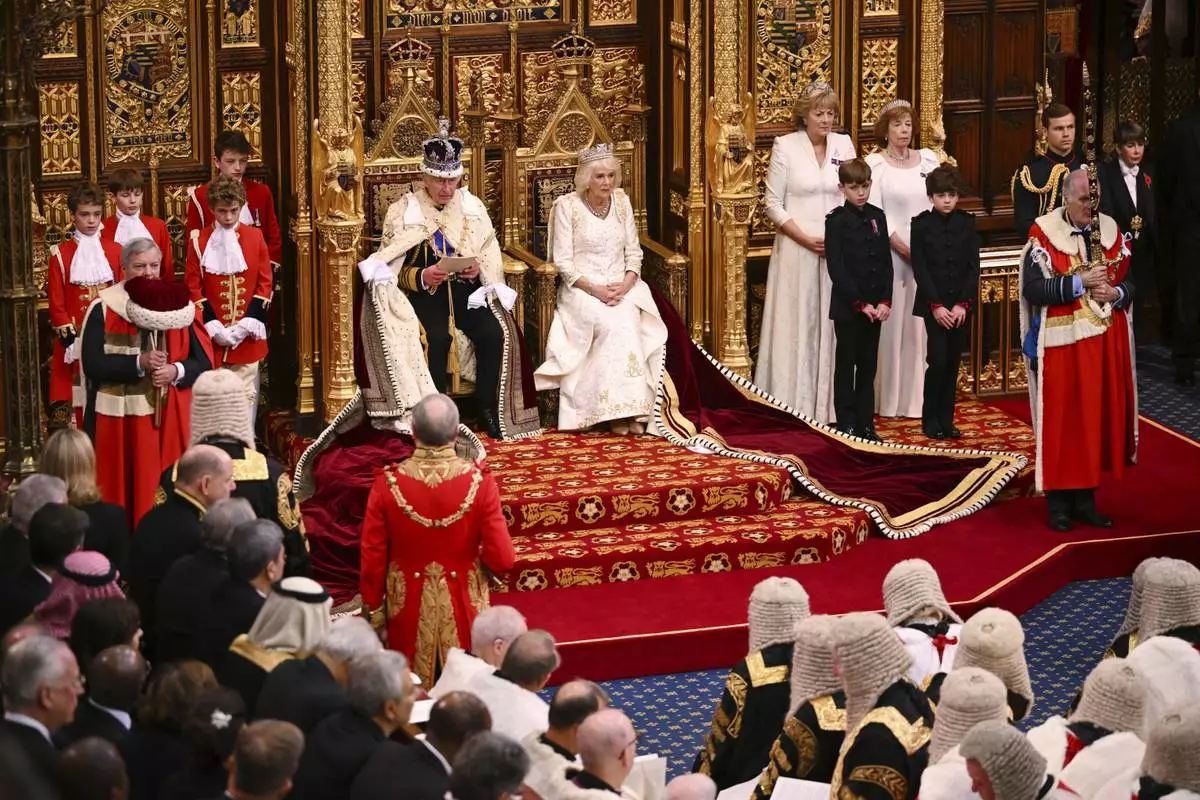
FILE - Britain's King Charles III, center left, next to Queen Camilla, reads out a speech, written by Prime Minister Rishi Sunak's government, outlining its legislative plans, during the State Opening of Parliament at the Houses of Parliament, in London, on Nov. 7, 2023. (Leon Neal/Pool Photo via AP, File)
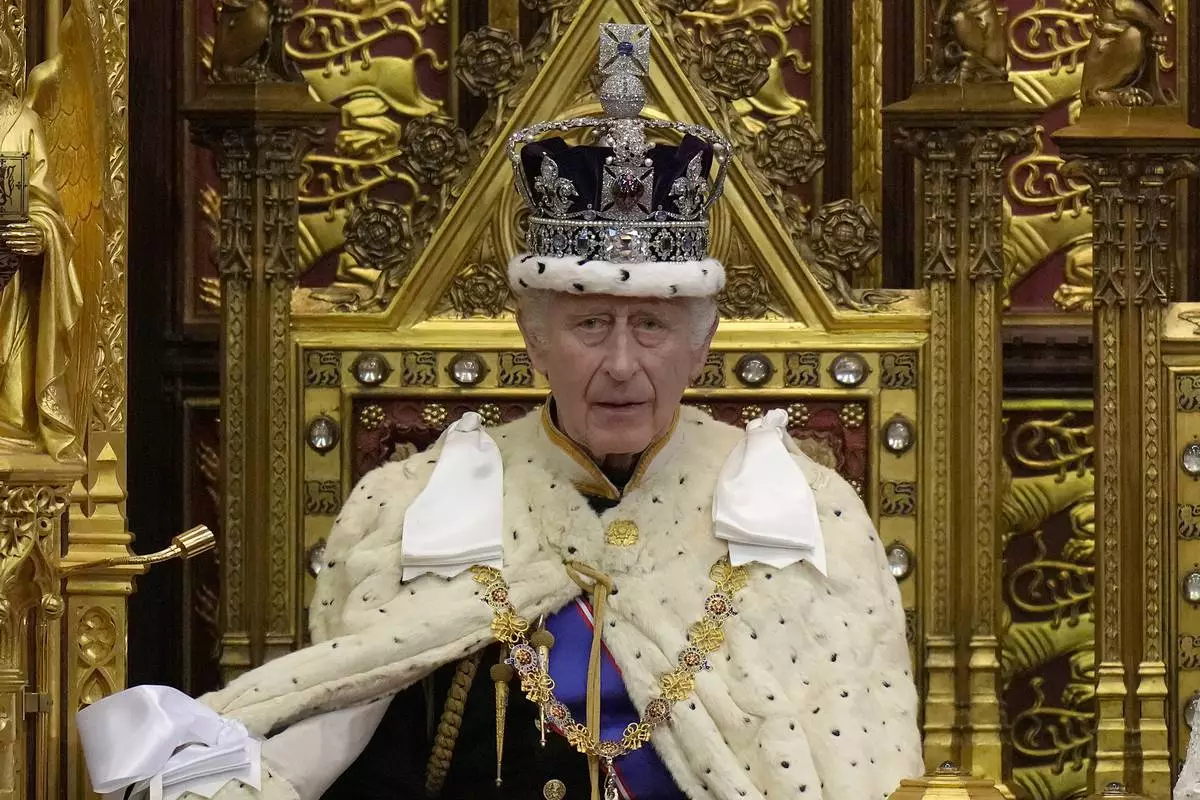
FILE - Britain's King Charles III pauses during the State Opening of Parliament at the Palace of Westminster in London on Nov. 7, 2023. (AP Photo/Alastair Grant, Pool, File)
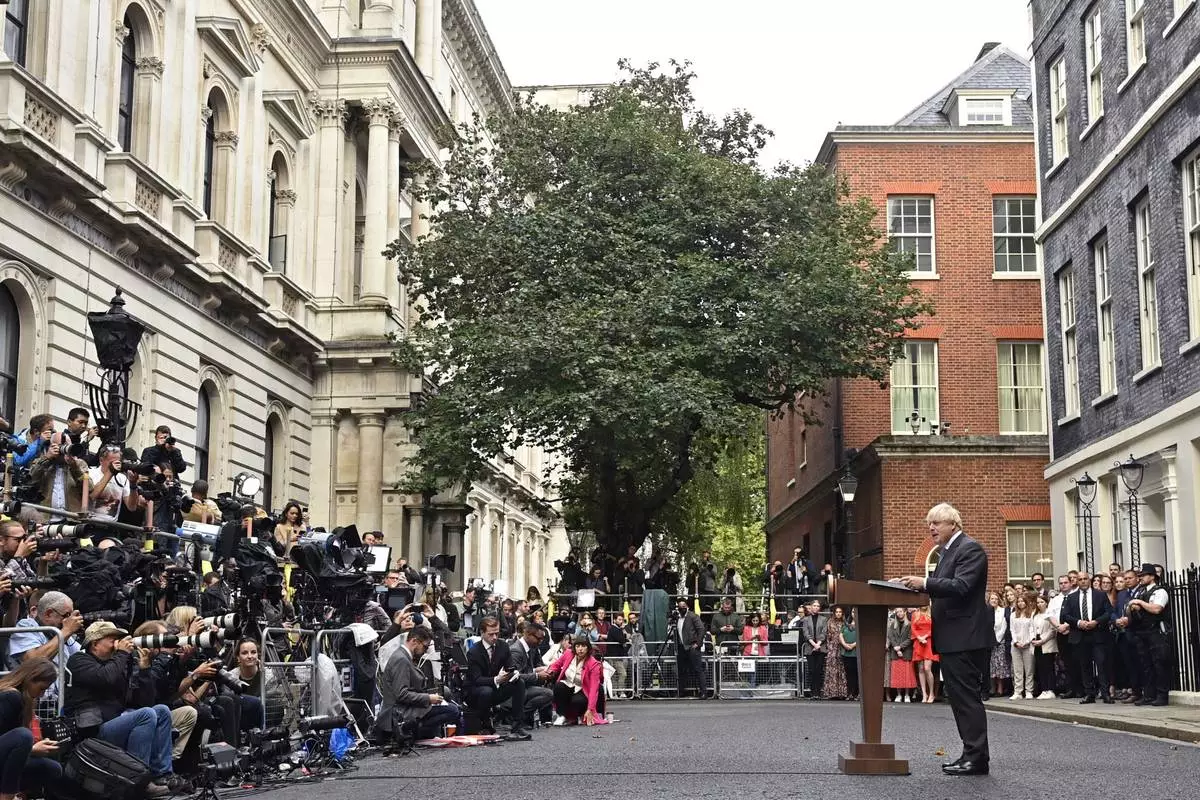
FILE - Outgoing British Prime Minister Boris Johnson speaks outside Downing Street in London, on Sept. 6, 2022, before heading to Balmoral in Scotland, where he will announce his resignation to Britain's Queen Elizabeth II. (Justin Tallis/Pool Photo via AP, File)
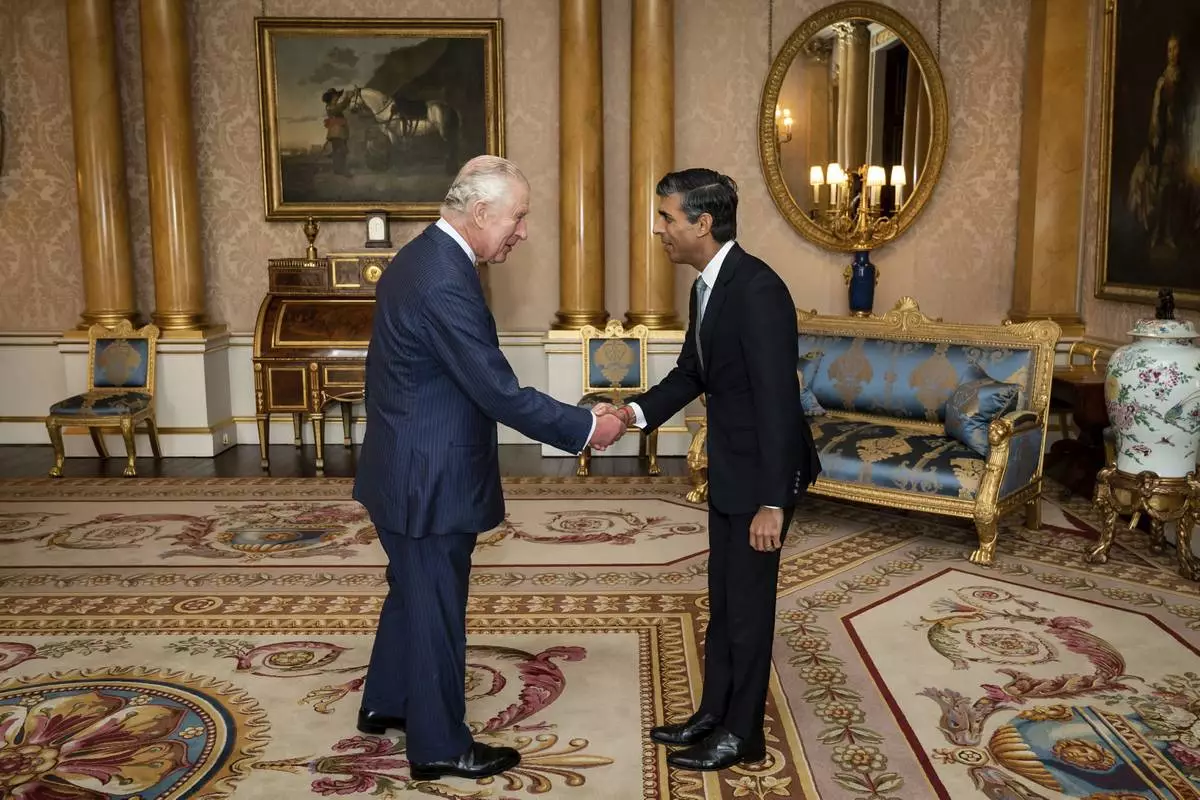
FILE - King Charles III, left, welcomes Rishi Sunak during an audience at Buckingham Palace in London, where he invited the newly elected leader of the Conservative Party to become prime minister and form a new government, Oct. 25, 2022. (Aaron Chown/Pool Photo via AP, file)
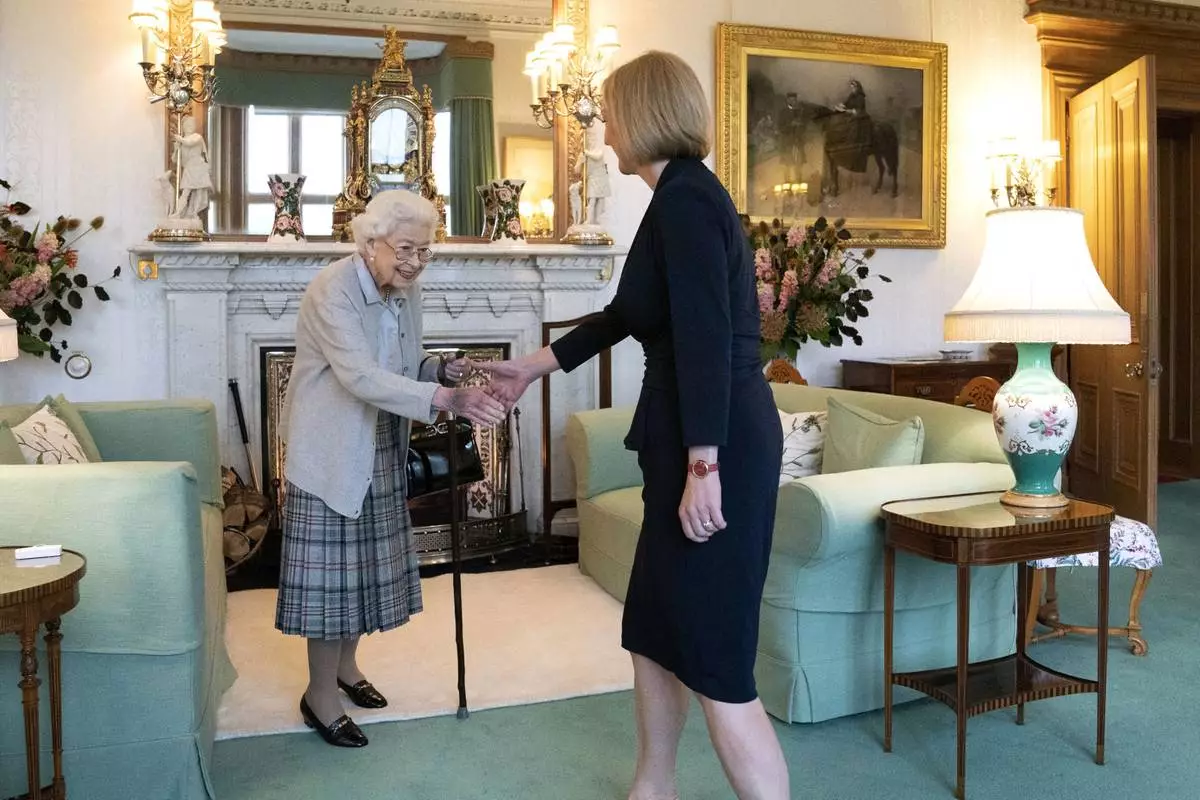
FILE - Britain's Queen Elizabeth II, left, welcomes Liz Truss during an audience at Balmoral, Scotland, where she invited the newly elected leader of the Conservative party to become prime minister and form a new government, on Sept. 6, 2022. (Jane Barlow/Pool Photo via AP, File)

FILE - Britain's Queen Elizabeth II welcomes newly elected leader of the Conservative party Boris Johnson during an audience at Buckingham Palace, London, on July 24, 2019, where she invited him to become prime minister and form a new government. (Victoria Jones/Pool via AP, File)
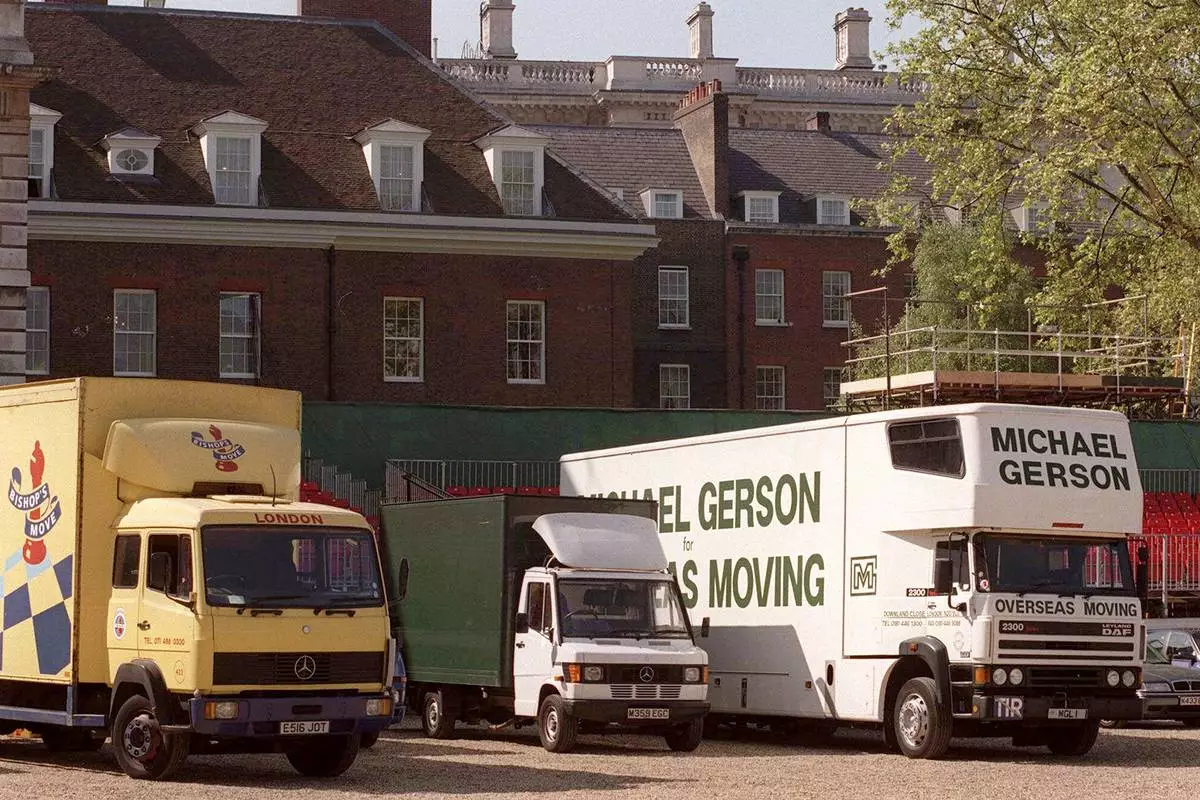
FILE - Removal vans line up at the rear of Downing Street after new Prime Minister Tony Blair replaced outgoing Conservative John Major, in London, on May 2 1997. (AP Photo/Jacqueline Arzt, File)
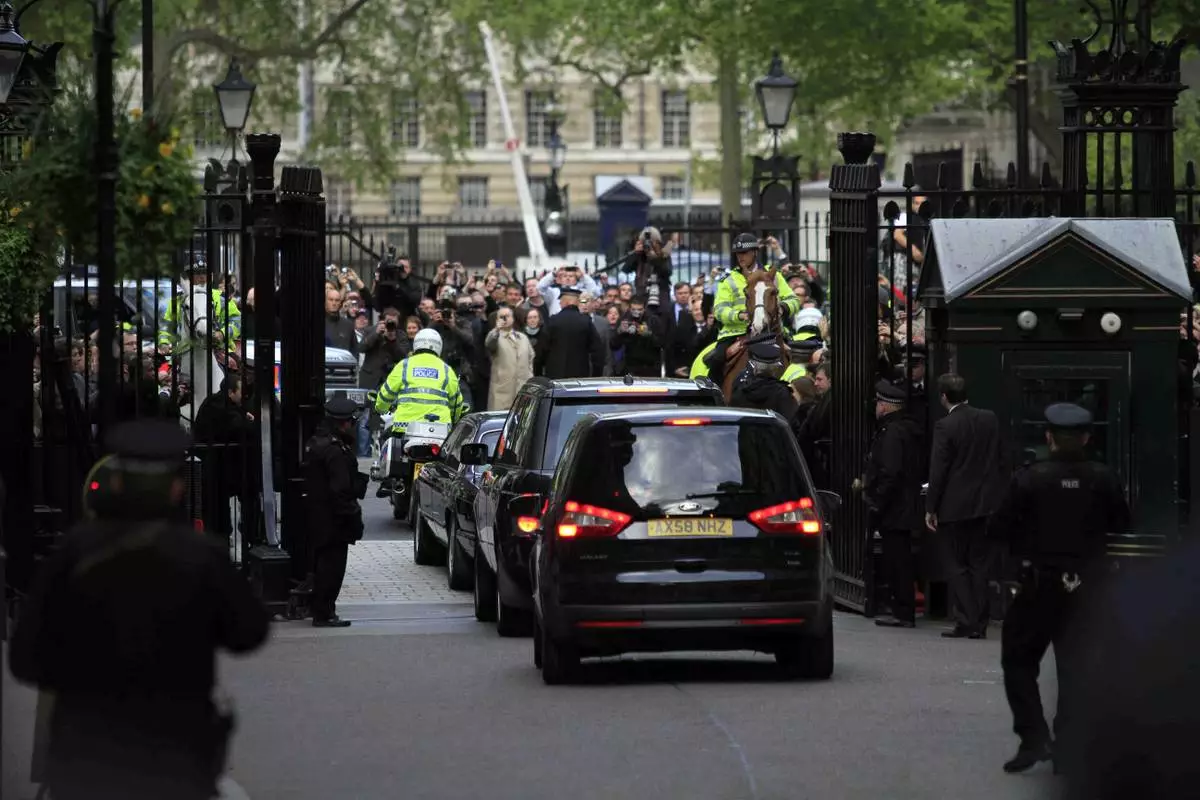
The motorcade carrying Britain's former Prime Minister Gordon Brown, leaves his former official residence at 10 Downing Street in central London, on May 11, 2010. (AP Photo/Lefteris Pitarakis)
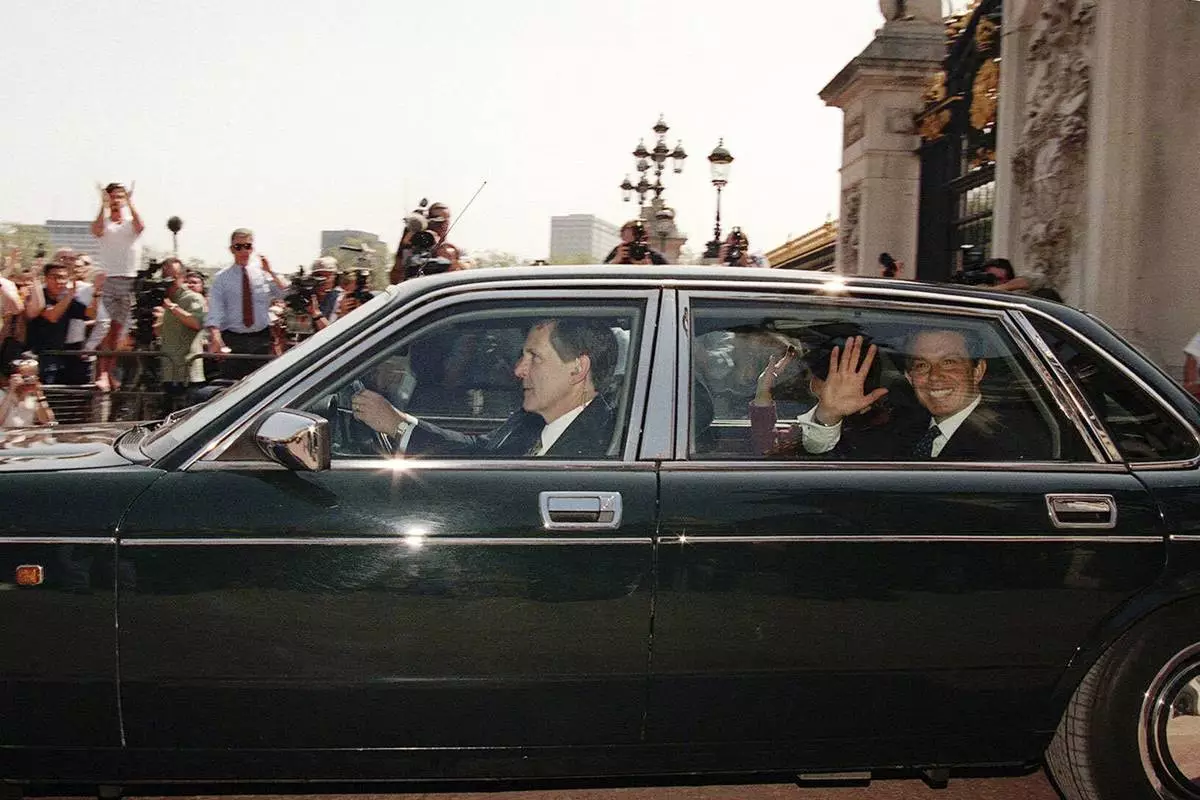
FILE - Britain's new Prime Minister Tony Blair, smiles from the back of his official car as it leaves Buckingham Palace, central London, en route for Downing Street, on May 2, 1997. (AP Photo/Alastair Grant, File)














